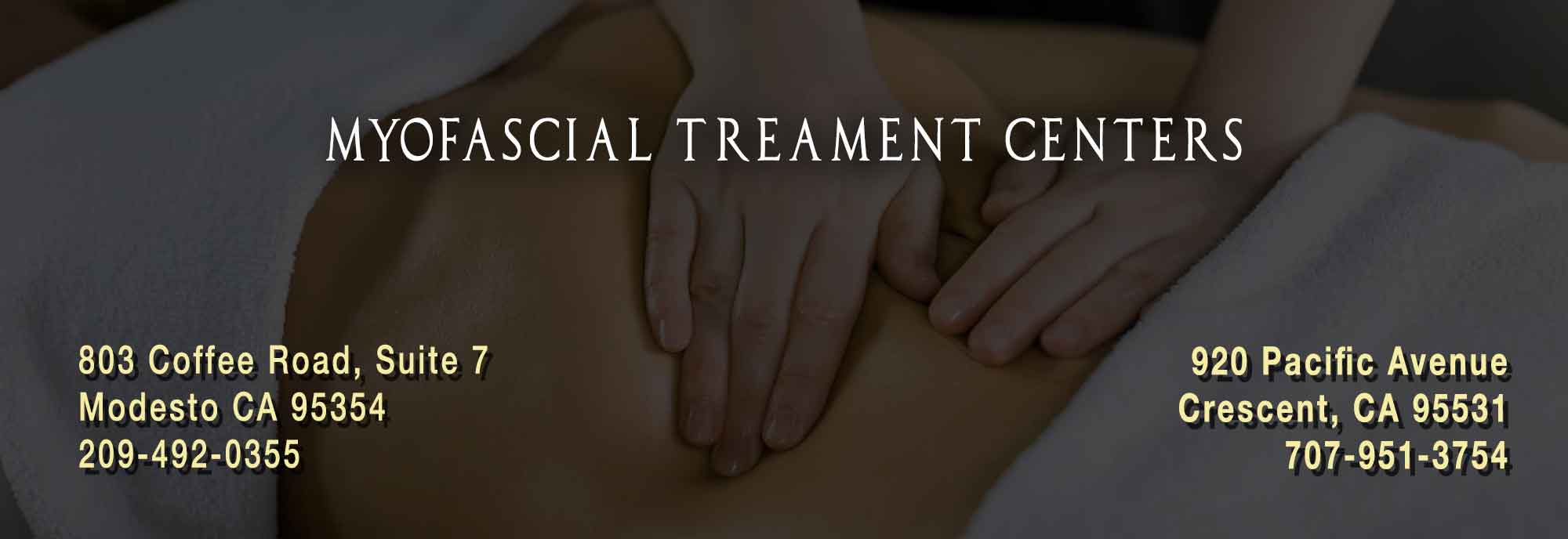[vc_row][vc_column][vc_column_text]
MYO is muscle: FASCIA is the connective tissue that holds us together. Myofascial pain is pain that comes from muscles and the fascia that is interwoven throughout and covering them.
What are Trigger points or Fascial Restrictions? Trigger points, fascial restrictions are hypersensitive, tightened areas which can occur in any muscle. Trigger points cause pain and dysfunction in local and distant areas. Trigger points can also cause tingling, burning, weakness and other symptoms. They are established by the trauma that occurs during injury from accidents, sports, occupations and disease. Physical or emotional stress frequently aggravates trigger points. Myofascial pain accounts for as much as 85% of the pain people suffer from. Acute and chronic myofascial pain due to trigger points is a very common condition.
How did Trigger Point research develop? Janet G. Travell, MD, a pioneer in the development of myofascial pain treatment in the development of myofascial pain treatment, was President John F. Kennedy’s personal White House physician. She relieved his severe and chronic back pain. Dr. Travell’s research demonstrated that each trigger point in a muscle has a specific pattern of referred pain. That is, a myofascial trigger point will produce pain and other symptoms in another part of the body. The work of Myofascial Trigger Point Therapists is based on the treatment protocols of Dr. Travell.
Myofascial Release Therapy. Myofascial Release Therapy is a non-invasive treatment for the relief and control of acute and chronic pain and limited range of motion due to trigger points and fascial restrections. No medications or injections are used. Myofascial Release Therapy interrupts the pain-spasm-pain cycle by inactivating trigger points in muscles. Patients are given a rehabilitation program that is specifically designed for their individual needs. The rehabilitation consists of stretching and strengthening exercises that are appropriate for the individual. Following this program as directed retrains the muscles to stay at their normal resting length in a pain-free state. Posture is improved and a balance in your body structure is gained.
The rehabilitation program is the KEY to maintaining pain relief. Here at the Myofascial Treatment Center we emphasize patient self-sufficiency. When desired the patient can learn self treatment techniques.
What are contributing Causes of Trigger Points? Perpetuating factors, for instance, muscular stressors such as poor posture, overuse of muscles and prolonged immobility are evaluated and corrected. We assess work stations and make suggestions for ergonomic changes. Impaired sleep, postural imbalances, nutritional issues, allergies, and other issues relevant to muscular health are addressed. These and other causes are addressed during treatment in order to obtain lasting relief from pain.
What Conditions can be helped?
- Neck and shoulder pain.
- Back pain, leg, and knee and foot pain.
- Repetitive Strain Injuries.
- Headaches and head pain including TMJD.
- Thoracic Outlet Syndrome.
- Tendonitis and frozen shoulder.
- Pelvic pain and Incontinence.
- Pre and post-operative treatment for joint replacements.
- Sports injuries.
- Pain and dysfunction associated with diseases, such as Arthritis, Fibromyalgia, degenerative discs, etc…
How do I know if my pain will respond to Myofascial Release Therapy? Since as much as 85% of the pain people suffer from has a Myofascial component, it is likely that you will have a decrease in pain and an increase in range of motion once treatment has started. You may also have other underlying conditions that need to be addressed. Since treatment of your muscles is very specific, your response can also help the therapist and your doctor to determine what other conditions are present that are causing you pain.
Benefits of Myofascial Release Therapy.
- Eliminate or decrease pain.
- Increase range of motion, flexibility and strength.
- Improve sleep, a common problem associated with myofascial pain.
- Increase endurance at work and play.
- Decrease or eliminate medication, under doctor’s supervision.
- General improvement in quality of life and fitness level, increased energy and reduced stress.
- Increase body awareness.
Treatment Goals. The emphasis is always to reduce or eliminate the pain in the short and long term. Respect for each person in a warm and caring environment is essential. Educating each patient so that they can make appropriate changes and be more self sufficient is another important objective.[/vc_column_text][/vc_column][/vc_row]

